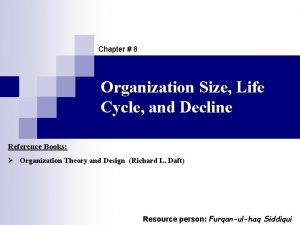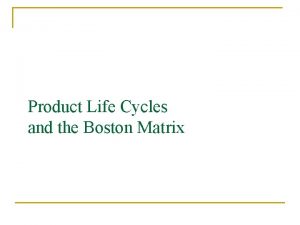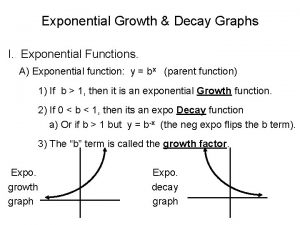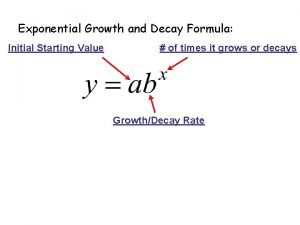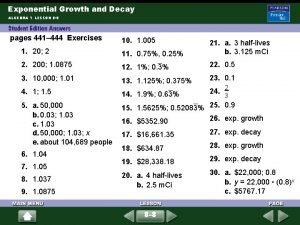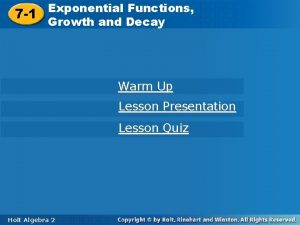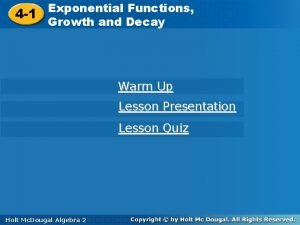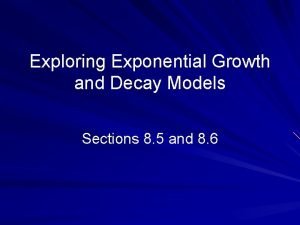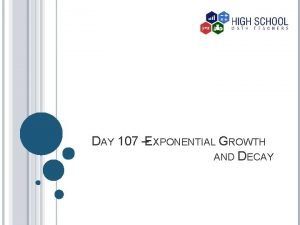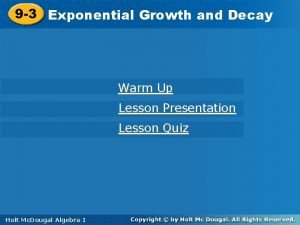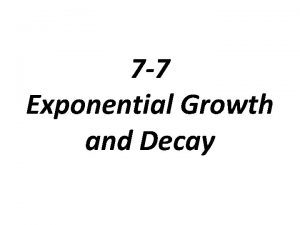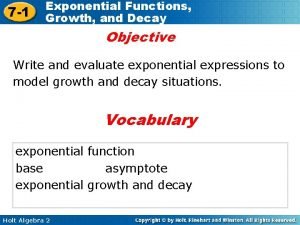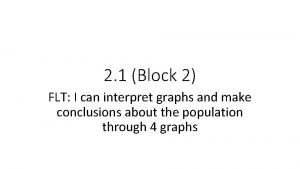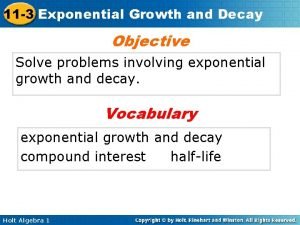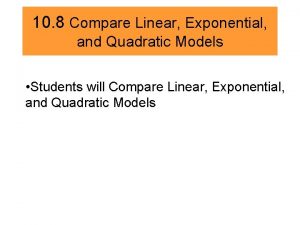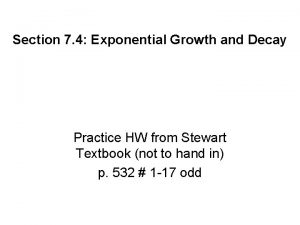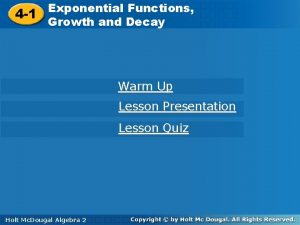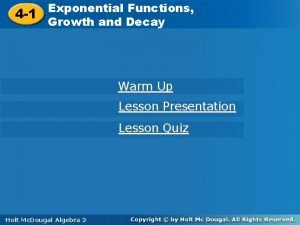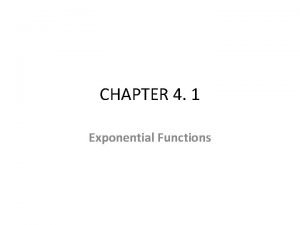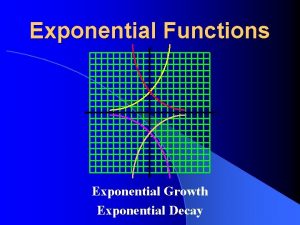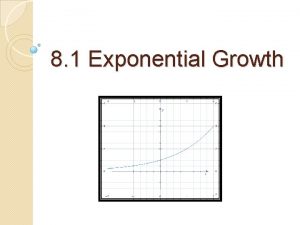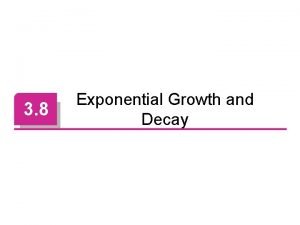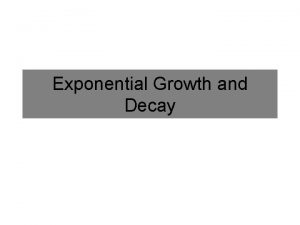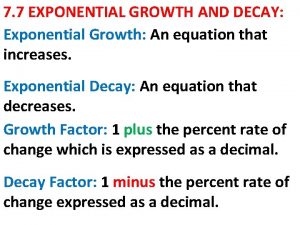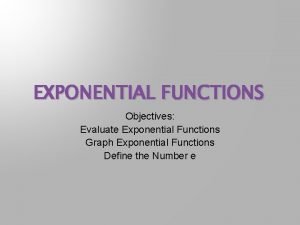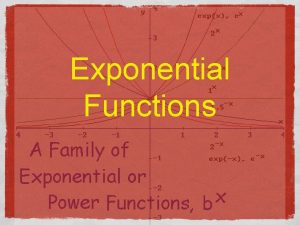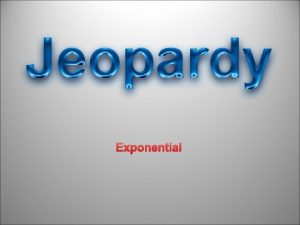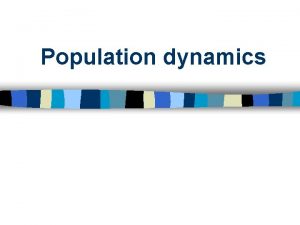Growth and decline Exponential growth pop size at






















- Slides: 22

Growth and decline

Exponential growth pop. size at time t+ t N(t+ t) = pop. size at time t + = N(t) + Hypothesis: N = r N t r - rate constant of growth increment N

Differential equation for exponential growth

Exponential growth r=0. 1 10 9 8 7 N(t) 6 5 4 3 2 1 0 0 2 4 6 8 10 12 Time - t 14 16 18 20

Exponential growth in discrete time Nt+1 = Nt + r Nt Nt+1 = (1+r) Nt Nt = (1+r)t N 0

Exponential decline r - mortality rate

Exponential decline r=0. 1 N(t) Time – t

Limited growth Factors that affect population dynamics • reproduction (growth rate) • mortality • environmental capacity

Monomolecular model for limited growth First order chemical reaction: A P A – reactant, P – product, R(t) – reactant concentration k – reaction rate - Exponential decay C(t) – product concentration A = R(0)

Monomolecular growth 50 45 40 Product C(t)=A(1 -exp(-kt)) Concentrations 35 30 25 20 15 Reactant R(t)=A exp(-kt) 10 5 0 0 1 2 3 4 5 time 6 7 8 9 10

Logistic growth model Relies on the hypothesis that population growth is limited by environmental capacity K – environmental capacity

150 100 N(t) 50 time 0 0 2 4 6 8 10 12 14 16 18 20

Logistic growth with time delay Factor that limits growth acts after some time TD No analytical solution

1800 1600 1400 1200 1000 800 600 400 200 0 0 10 20 30 40 50 60 70 80 90 100

Discrete logistic model

Growth of individual organisms

Von Bertalanffy’s model Postulates: • Gain in weight is proportional to the surface area of the organism • Loss in weight is proportional to the weight of the organism • Organism maintain the same shape while growing

Von Bertalanffy’s model S – surface area W – weight L - length H, C - parameters (monomolecular growth)

Richards’ family of models Has all of previous models as special cases

Allometric growth Allometry – study of relative sizes of different parts of organisms X, Y Hypothesis:

Computations Matlab script files and functions Simulink block diagrams

Computations Matlab functions: exp(x) - exponential plot(x, y) - plot ode 45 – compute solution to ODE X=AB - least squares (help slash) fmins - minimize function over arguments
 Chegg
Chegg Geometric growth population
Geometric growth population Matrix
Matrix What does pop in pop art stand for
What does pop in pop art stand for Is this exponential growth or decay
Is this exponential growth or decay Growth and decay
Growth and decay Lesson 13-1 exponential growth functions answers
Lesson 13-1 exponential growth functions answers 7-1 exponential functions growth and decay
7-1 exponential functions growth and decay 4-1 exponential functions growth and decay
4-1 exponential functions growth and decay Exploring exponential models practice
Exploring exponential models practice Exponential decay funtion
Exponential decay funtion Half life formula algebra 2
Half life formula algebra 2 7-7 exponential growth and decay
7-7 exponential growth and decay 7-1 exponential functions growth and decay
7-1 exponential functions growth and decay 4-1 exponential functions growth and decay
4-1 exponential functions growth and decay Exponential growth and carrying capacity
Exponential growth and carrying capacity Exponential growth and decay formula
Exponential growth and decay formula Linear quadratic exponential examples
Linear quadratic exponential examples Growth and decay poe
Growth and decay poe Logistic growth equation population ecology
Logistic growth equation population ecology 4-1 exponential functions growth and decay
4-1 exponential functions growth and decay 4-1 exponential functions growth and decay
4-1 exponential functions growth and decay Exponential functions growth and decay
Exponential functions growth and decay
